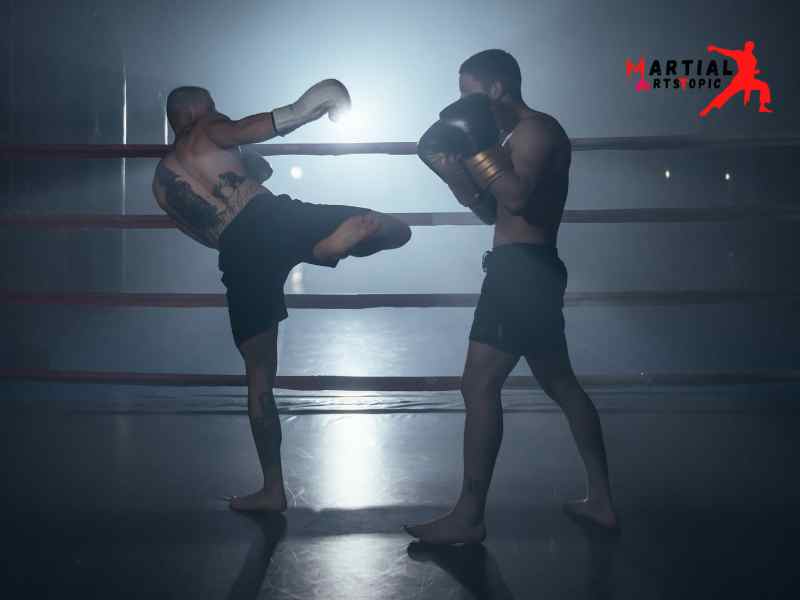
The History of Mixed Martial Arts (MMA)
The History of Mixed Martial Arts (MMA) , also known as cage fighting or ultimate fighting, is a combat sport that incorporates various fighting techniques from different disciplines. It has gained immense popularity over the years, captivating audiences around the world with its intense and thrilling bouts. In this blog post, we will delve into the history of MMA, exploring its origins, evolution, and impact on the world of combat sports.
What is (MMA)?
What is (MMA)? Mixed Martial Arts (MMA) is a dynamic combat sport that combines techniques from various disciplines, including boxing, wrestling, Brazilian Jiu-Jitsu, Muay Thai, and more. It’s a full-contact sport that requires a high level of physical fitness, mental focus, and strategic thinking. MMA fighters must possess a versatile skill set to excel in both striking and grappling situations. The sport has gained widespread popularity for its intense and fast-paced nature, drawing in a diverse fan base from around the world. Whether you’re a seasoned athlete or a newcomer to the sport, MMA offers an exciting and challenging avenue for self-improvement and personal growth.
The Origins of MMA
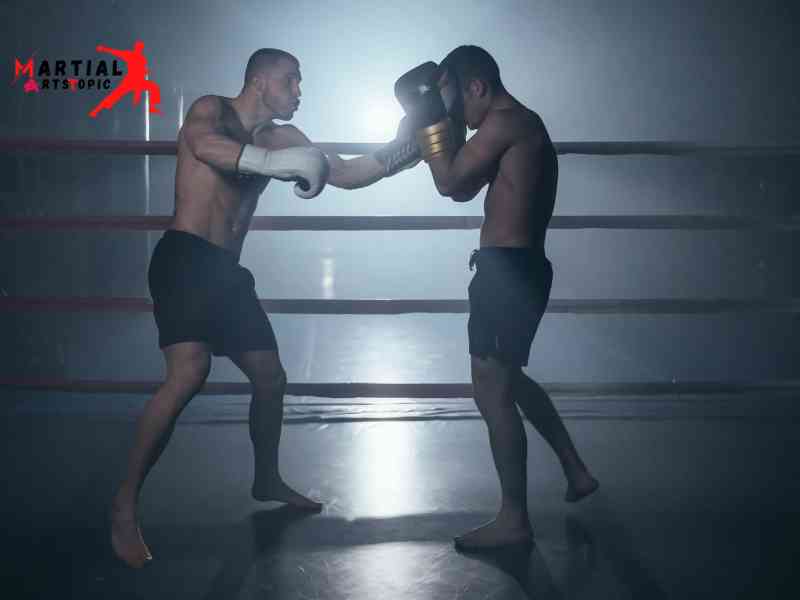
We can trace the roots of MMA back to ancient civilizations and their respective combat sports. Ancient Greeks practiced a sport known as Pankration, which combined striking and grappling techniques. Similarly, the ancient Egyptians had their own version of mixed combat sports. However, the modern form of MMA that we know today emerged in the late 20th century.
In 1993, Art Davie and Rorion Gracie found the Ultimate Fighting Championship (UFC). The UFC’s aim was to bring together fighters from various martial arts disciplines to determine the most effective style. The early UFC events featured fighters of different backgrounds, including boxers, wrestlers, karate experts, and Brazilian Jiu-Jitsu practitioners. These events became the platform for showcasing different fighting styles and sparked the evolution of MMA.
Evolution of MMA
In its early days, MMA faced criticism and controversy because of its perceived brutality and lack of rules. This led to significant changes in the sport, including the introduction of weight classes, time limits, and stricter rules to ensure the safety of fighters. The sport gradually gained recognition and started attracting a wider audience.
Over the years, MMA strengthened into a highly technical and strategic sport. Fighters began cross-training in multiple disciplines to become well-rounded athletes. This led to the development of a hybrid fighting style that combined elements from various martial arts, giving birth to the modern MMA techniques we see today.
The Impact of MMA
MMA’s rise in popularity can be attributed to several factors. Its appeal lies in the raw and authentic nature of the sport, where fighters showcase their skills and determination inside the cage. The UFC, now the largest MMA promotion, has played a crucial role in promoting and popularizing the sport globally.
MMA’s mainstream success also owes a lot to the rise of charismatic fighters such as Conor McGregor, Ronda Rousey, and Jon Jones, who have captured the imagination of fans with their impressive performances and larger-than-life personalities. Their star power has helped MMA transcend traditional boundaries and reach a wider audience.
MMA’s influence extends beyond the world of combat sports. Athletes in other disciplines, such as football, basketball, and even military training, have adopted its training methods and techniques. MMA has also inspired a new generation of fighters, who see it as a pathway to personal growth, discipline, and self-defense.
The Evolution of Mixed Martial Arts (MMA): From Ancient Combat to Modern Sport
The Evolution of Mixed Martial Arts (MMA): From Ancient Combat to Modern Sport Mixed martial arts (MMA), also known as cage fighting, is a dynamic and thrilling combat sport that has captivated audiences around the world. But have you ever wondered how MMA came to be?
Mixed martial arts (MMA) is a full-contact combat sport that allows fighters to utilize a combination of striking and grappling techniques from various martial arts disciplines. They often conducted it in an enclosed area, such as a cage or a ring. MMA fighters must possess a well-rounded skill set, including proficiency in striking, wrestling, and submission techniques.
Ancient Origins of MMA
While MMA as we know it today is a relatively modern sport, the concept of mixed-style fighting can be traced back to ancient civilizations. In ancient Greece, the Olympic Games featured a combat sport called Pankration, which combined elements of boxing and wrestling. Similarly, ancient China had combat known as Leitai, where fighters used a mix of striking, grappling, and joint locks.
The Birth of Modern MMA
The modern era of MMA began to take shape in the early 20th century. In Brazil, the Gracie family developed Brazilian Jiu-Jitsu (BJJ), a ground-based fighting style that emphasized leverage and technique over brute strength. BJJ gained recognition and popularity when the Gracie family started to challenge and defeat practitioners of other martial arts in no-holds-barred fights.
The Ultimate Fighting Championship (UFC), the world’s premier MMA organization, was established in 1993. UFC 1 was a groundbreaking event that brought together fighters from different martial arts backgrounds to compete in a tournament-style format. This marked the beginning of a new era in combat sports, where fighters could test their skills against opponents with different training backgrounds.
Regulation and Expansion
As MMA gained popularity, various regulatory bodies emerged to ensure the safety and fairness of the sport. They implemented rules to protect fighters and minimize the risk of serious injuries. Weight classes were introduced, and techniques that were deemed too dangerous, such as strikes to the groin or the back of the head, were banned.
With the rise of the internet and pay-per-view television, MMA’s popularity skyrocketed. Organizations such as Bellator MMA, ONE Championship, and Professional Fighters League (PFL) emerged, providing platforms for fighters from around the world to showcase their skills. MMA also became a global phenomenon, with events taking place in countries like Brazil, Japan, Russia, and the United States.
Evolution of Fighting Styles
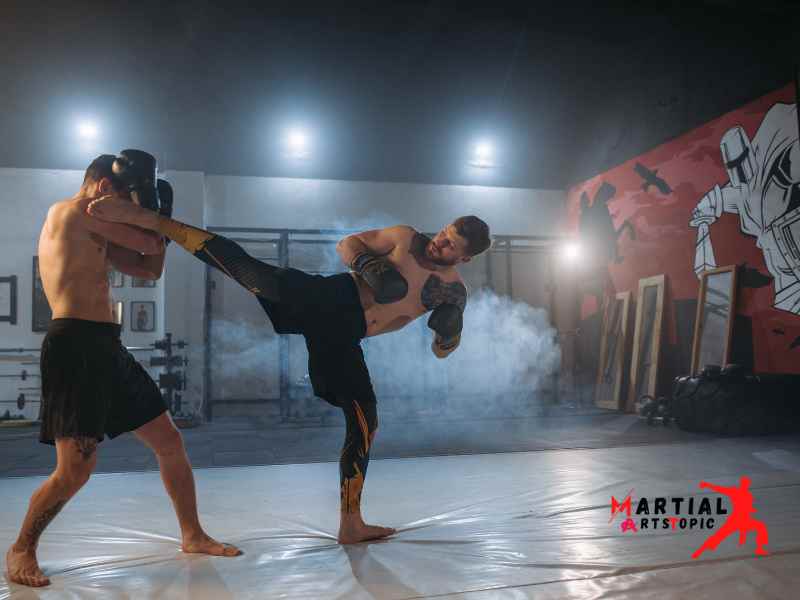
One of the most intriguing aspects of MMA is the evolution of fighting styles. In the early days, fighters often specialized in one martial art and relied heavily on their strengths. However, as the sport progressed, fighters realized the importance of being well-rounded and started incorporating techniques from various disciplines into their training.
Today, successful MMA fighters are proficient in striking arts like boxing, kickboxing, and Muay Thai, as well as grappling arts such as Brazilian Jiu-Jitsu, wrestling, and judo. They have to adapt their strategies based on their opponent’s strengths and weaknesses, making each fight a unique and unpredictable spectacle.
The Benefits of Mixed Martial Arts for Fitness and Self-Defense
What is (MMA? Mixed Martial Arts (MMA) has gained immense popularity worldwide, not only as a competitive sport but also as an effective fitness regimen and self-defense training. Combining techniques from various martial arts disciplines, MMA offers a comprehensive workout that improves both physical and mental well-being.
Total-Body Workout
One of the primary reasons they draw people to MMA is its ability to provide a full-body workout. Unlike traditional workouts that may focus on specific muscle groups, MMA training engages multiple muscle groups simultaneously. From striking techniques like boxing and kickboxing to grappling and ground fighting, participants develop strength, endurance, agility, and flexibility.
Improved Cardiovascular Health
MMA training involves intense cardiovascular exercises, such as high-intensity interval training (HIIT) and continuous movement drills. These activities elevate heart rate and increase stamina, leading to improved cardiovascular health. Regular MMA practice can help lower blood pressure, reduce the risk of heart disease, and enhance overall endurance.
Increased Strength and Power
The various techniques and movements involved in MMA training build functional strength and power. Striking techniques like punches and kicks promote upper and lower body strength, while grappling techniques require core strength and stability. By incorporating resistance training and bodyweight exercises into MMA workouts, participants can develop robust muscles and explosive power.
Weight Loss and Body Toning
For individuals looking to shed excess weight and achieve a leaner physique, MMA training can be a highly effective solution. The high-intensity nature of MMA workouts burns a significant number of calories, aiding in weight loss. Additionally, consistent MMA training helps tone the body, resulting in improved muscle definition and overall body composition.
Enhanced Self-Defense Skills
While fitness is a significant aspect of MMA training, it also equips participants with vital self-defense skills. The combination of striking, grappling, and ground fighting techniques allows individuals to develop a well-rounded set of defensive skills that can be applied in real-life situations. This sense of self-confidence and preparedness can significantly contribute to personal safety and peace of mind.
Stress Relief and Mental Well-being
Engaging in MMA training can serve as an excellent stress relief mechanism. The physical intensity of the workouts releases endorphins, which are natural mood boosters. Additionally, the mental focus required during training helps participants develop discipline, concentration, and self-control, leading to improved mental well-being and a sense of accomplishment.
Increased Self-Confidence
As participants progress in their MMA training, they experience a boost in self-confidence. The combination of improved physical fitness, self-defense skills, and mental resilience contributes to an increased sense of self-assurance both inside and outside the training facility. This newfound confidence often translates into other areas of life, such as work and relationships.
Different Fighting Styles in MMA
Different Fighting Styles in MMA, Mixed martial arts (MMA) is a combat sport that combines various fighting styles from around the world. It is an intense and dynamic sport that requires a high level of skill, athleticism, and strategy.
Brazilian Jiu-Jitsu (BJJ)
BJJ is a ground-based fighting style that focuses on grappling and submissions. Fighters who are well-versed in BJJ can use their opponents’ strength against them by utilizing various holds, locks, and chokes. This style is particularly effective for smaller fighters who can neutralize their larger opponents with technique and leverage.
Muay Thai
Muay Thai, also known as the “art of eight limbs”, is a striking-based martial art from Thailand. It incorporates punches, kicks, knees, and elbows, making it a highly versatile style in MMA. We know Muay Thai fighters for their devastating strikes and clinch work, which can quickly end a fight or set up a submission attempt.
Boxing
Boxing is a western-style martial art that focuses on punches and footwork. While it may seem limited in comparison to other fighting styles, boxing is highly effective in MMA. Many successful MMA fighters have a background in boxing and use their superior striking skills to outmaneuver and knockout their opponents.
Wrestling
Wrestling is a grappling-based style that emphasizes takedowns, control, and ground positioning. We know wrestlers for their strength, explosiveness, and ability to dictate where the fight takes place. A strong wrestling foundation is crucial in MMA, as it allows fighters to dictate the pace of the fight and neutralize their opponent’s striking abilities.
Kickboxing
Kickboxing incorporates both punches and kicks, making it a well-rounded fighting style for MMA. Fighters who have a background in kickboxing are highly skilled in striking from a distance and can effectively close the gap to engage in close-quarters combat.
Karate
Karate is a traditional Japanese martial art that emphasizes striking techniques. While it may not be as prevalent in MMA as other styles, fighters who incorporate karate into their game plan can surprise their opponents with unorthodox strikes and unpredictable movement.
Taekwondo
Taekwondo is a Korean martial art that focuses on high kicks and fast footwork. It requires exceptional flexibility and agility, making it a flashy and exciting style to watch in MMA. Taekwondo fighters often use their kicks to create distance and keep their opponents at bay.
Judo
Judo is a grappling-based martial art that emphasizes throws and takedowns. Fighters who have a background in judo can use their opponent’s momentum against them, often resulting in powerful throws and swift takedowns. Judo is particularly effective in close-quarters combat, where fighters can quickly transition to submissions or ground-and-pound.
The Art of Mixed Martial Arts (MMA): Training Tips and Strategies
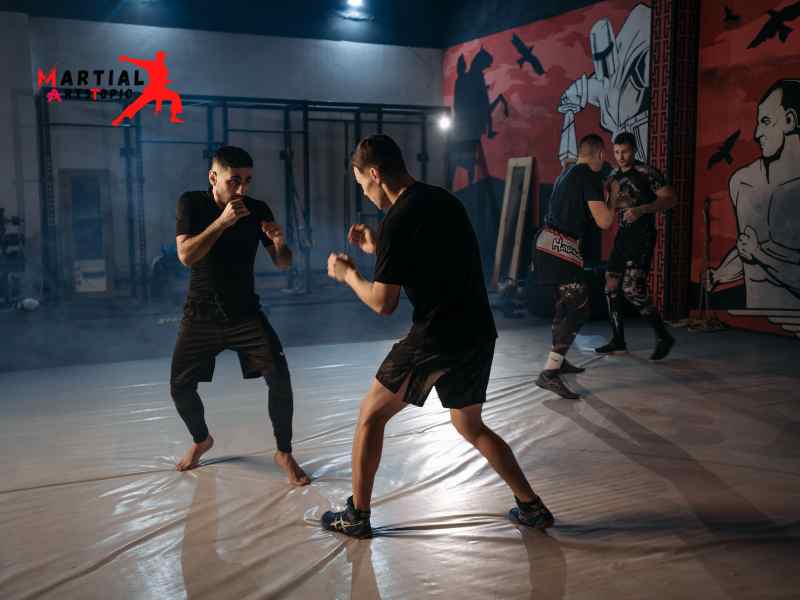
The Art of Mixed Martial Arts (MMA): Training Tips and Strategies Mixed martial arts (MMA) has gained immense popularity over the years, captivating fans with its intense and thrilling action. Whether you are a seasoned athlete or just starting your MMA journey, it is crucial to understand the training tips and strategies that can help you master this incredible combat sport.
To become proficient in MMA, it is essential to focus on various aspects of training. Let’s explore some key tips and strategies that can help you excel in this multifaceted discipline.
- Build a Strong Foundation: Developing a solid foundation is paramount in MMA. This begins with mastering the fundamental techniques of various martial arts styles, such as Brazilian Jiu-Jitsu, Muay Thai, Boxing, and Wrestling. Each discipline brings its unique set of skills, and understanding their core principles will provide you with a well-rounded skill set.
- Conditioning and Cardiovascular Fitness: MMA is a physically demanding sport that requires exceptional stamina and endurance. Incorporate cardiovascular exercises like running, swimming, and cycling into your training routine to improve your overall fitness level. Additionally, high-intensity interval training (HIIT) can help simulate the intense bursts of energy required during MMA fights.
- Strength and Power Training: Developing strength and power is crucial in MMA. Resistance training, such as weightlifting and bodyweight exercises, can help you build functional strength and explosive power. Focus on compound exercises that target multiple muscle groups simultaneously. Don’t neglect your core muscles, as they play a vital role in generating power and maintaining stability during fights.
- Flexibility and Mobility: MMA fighters need to be agile and flexible to execute various techniques effectively. Incorporate dynamic stretching exercises into your warm-up routine to improve your flexibility and mobility. Additionally, practicing yoga or Pilates can enhance your range of motion and help prevent injuries.
- Sparring and Drilling: Regular sparring sessions with partners of different skill levels are essential to sharpen your techniques, reflexes, and timing. Focus on both stand-up and ground fighting scenarios to become well-rounded. Additionally, drilling specific techniques repetitively can help you master them and make them second nature during fights.
- Mental Preparation: MMA is not just a physical battle; it is also a mental one. Developing mental toughness, focus, and resilience is crucial to succeed in this sport. Incorporate mindfulness practices, meditation, and visualization techniques into your training routine to improve your mental clarity and concentration during fights.
- Nutrition and Recovery: Proper nutrition and adequate recovery are vital for optimal performance in MMA. Fuel your body with a balanced diet that includes lean proteins, complex carbohydrates, healthy fats, and plenty of fruits and vegetables. Hydration is also crucial, so make sure to drink enough water throughout the day. Additionally, prioritize rest and recovery to prevent over training and promote muscle repair and growth.
- Consistency and Discipline: Consistency and discipline are key to mastering any skill, and MMA is no different. Set realistic goals, create a training schedule, and stick to it. Push yourself to train even on days when motivation is lacking. Remember that progress takes time and effort, so stay dedicated and committed to your training regimen.
From Punches to Submissions: The Techniques of Mixed Martial Arts
From Punches to Submissions: Mastering the Techniques of Mixed Martial Arts Mixed Martial Arts (MMA) has gained immense popularity in recent years, captivating audiences around the world with its intense action and skillful techniques. If you have ever watched an MMA fight and wondered how the fighters execute those powerful punches and intricate submissions, you’re not alone. In this comprehensive guide, we will delve into the world of MMA and explore the fundamental techniques that every aspiring fighter should master.
Striking Techniques: The Art of Punches and Kicks
One of the key aspects of MMA is striking, which involves the proficient use of punches, kicks, elbows, and knees. Whether it’s throwing a bone-crushing punch or delivering a swift spinning kick, mastering striking techniques is crucial for success in the octagon.
Boxing, Muay Thai, and Taekwondo are just a few of the disciplines that contribute to the arsenal of devastating strikes used by MMA fighters. Learning proper footwork, understanding the range, and developing a strong striking game are essential to effectively land punches and kicks while avoiding counterattacks.
Grappling Techniques: The Art of Submissions and Takedowns
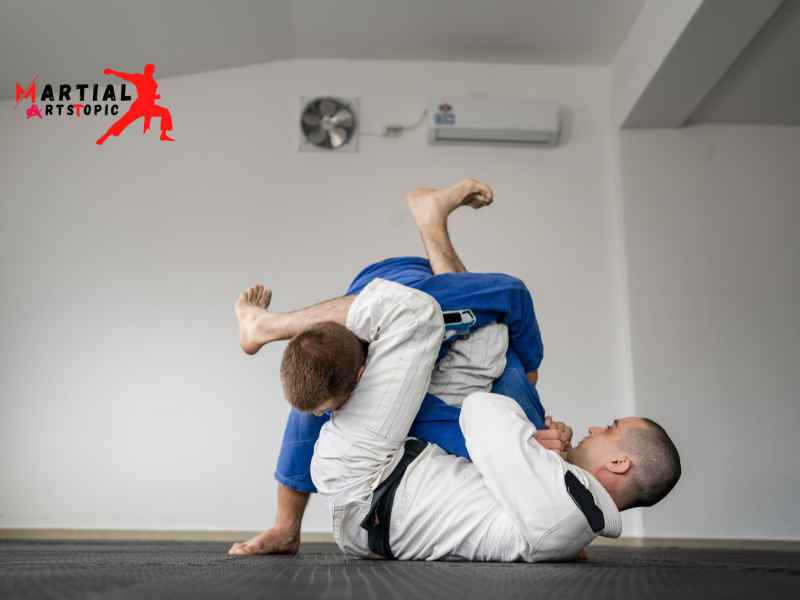
Another integral part of MMA is grappling, which focuses on controlling an opponent through holds, submissions, and takedowns. Brazilian Jiu-Jitsu (BJJ), wrestling, and Judo are some of the grappling styles commonly utilized by MMA fighters.
Submission holds, such as armbars, chokes, and leg locks, allow fighters to force their opponents into submission, while takedowns enable them to bring the fight to the ground. Developing a solid foundation in grappling techniques is vital for fighters to dominate their opponents and gain an advantage in the fight.
Clinch Work: Close Quarters Combat
The clinch is a position where fighters engage in close quarters combat, utilizing a combination of striking and grappling techniques. It enables fighters to control their opponents, deliver devastating knee strikes, and set up takedowns or submissions.
Clinch work requires a good understanding of balance, leverage, and timing. Thai clinch, undercooks, and overlooks are some techniques used to gain control in the clinch. Mastering this aspect of MMA can give fighters a significant advantage in dictating the pace and outcome of a fight.
Defensive Techniques: Protecting Yourself in the Octagon
While offense is crucial in MMA, defense is just as important. Learning defensive techniques, such as blocking, parrying, and evading strikes, can help fighters avoid damage and stay in the fight. Additionally, understanding how to defend against takedowns and submissions is crucial to prevent opponents from gaining control.
Effective defensive skills require a combination of reflexes, timing, and anticipation. Working on defensive techniques can minimize the impact of strikes and increase a fighter’s chances of launching successful counterattacks.
Conditioning and Mental Toughness: The Key to Endurance
MMA is a physically and mentally demanding sport. To excel in the octagon, fighters must have exceptional conditioning and mental toughness. Training methods, such as cardio exercises, strength training, and mental preparation, play a vital role in building endurance and resilience.
Having the physical stamina to go the distance in a fight can be the difference between victory and defeat. Additionally, developing mental toughness helps fighters stay focused, maintain composure under pressure, and overcome adversity in the heat of battle.
Why Mixed Martial Arts (MMA) is More Than Just a Sport
Mixed martial arts (MMA) is much more than just a sport. With its explosive growth and popularity, MMA has become a global phenomenon that captivates audiences around the world. This action-packed combat sport combines various martial arts disciplines, including boxing, kickboxing, Muay Thai, Brazilian Jiu-Jitsu, wrestling, and more. In this blog post, we will explore why MMA goes beyond being a sport and how it has become a way of life for many individuals.One of the key reasons why MMA is more than just a sport is the discipline and dedication it requires. Athletes who compete in MMA must undergo intense training, both physically and mentally, to excel in the octagon. The rigorous training routines help build strength, endurance, and agility, pushing fighters to their limits. This level of commitment instills discipline and teaches individuals the importance of setting goals, working hard, and persevering through challenges – valuable life lessons that extend far beyond the realm of MMA.
MMA promotes physical fitness and a healthy lifestyle. Athletes participating in MMA not only engage in intense workouts, but they also prioritize nutrition and maintaining a splendid physique. The emphasis on physical fitness encourages fans and practitioners of MMA to take care of their bodies and strive for overall well-being. This dedication to fitness can inspire others to adopt healthier habits and lead an active lifestyle.
Another aspect that sets MMA apart from other sports is its emphasis on respect and fair play. In MMA, they expected fighters to show respect to their opponents and adhere to a strict code of conduct. This emphasis on respect helps cultivate a sense of honor and integrity within the MMA community. Fighters often display good fair play by congratulating and showing appreciation for their opponents, win or lose. This display of respect and fair play extends beyond the octagon and serves as a reminder of the importance of treating others with dignity and respect in all aspects of life.
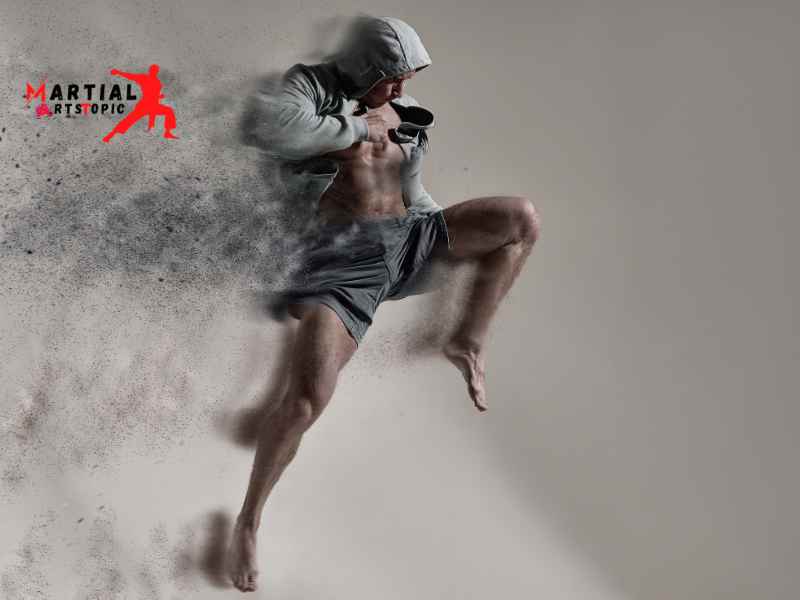
MMA also provides a platform for personal growth and self-improvement. The intense nature of the sport pushes fighters to confront their fears and overcome challenges. Through this process, participants develop mental toughness, perseverance, and resilience. It can transfer these qualities to other areas of life, such as work, relationships, and personal goals. MMA teaches individuals to push past their limits, embrace discomfort, and keep pushing forward, even when faced with adversity.
Furthermore, MMA serves as a source of inspiration and motivation for many people. The athletes who compete in MMA often come from diverse backgrounds and have overcome numerous obstacles to reach the pinnacle of their sport. Their stories of dedication, hard work, and triumph inspire others to chase their dreams and believe in their own potential. MMA demonstrates that with passion, determination, and sacrifice, anything is possible.
The Most Memorable Moments in Mixed Martial Arts (MMA) History
The Most Memorable Moments in Mixed Martial Arts (MMA) History Mixed martial arts (MMA) has gained immense popularity over the years, captivating audiences with its raw intensity and display of skill and athleticism. From epic knockouts to incredible comebacks, they fill the history of MMA with unforgettable moments that have left fans in awe. In this blog post, we will take a trip down memory lane and revisit some of the most memorable moments in MMA history.
- The Birth of UFC: The Ultimate Fighting Championship (UFC) is widely regarded as the premier MMA organization in the world. Its inception in 1993 marked the beginning of a new era in combat sports. UFC 1, held in Denver, Colorado, showcased an eclectic mix of martial arts styles, pitting practitioners of different disciplines against each other. Royce Gracie, a Brazilian jiu-jitsu specialist, emerged as the winner and introduced the world to the effectiveness of ground fighting.
- The Gracie Era: Royce Gracie’s dominance in the early years of the UFC solidified the importance of Brazilian jiu-jitsu in MMA. The Gracie family’s contributions to the sport cannot be overstated, as they revolutionized the way fighters approached combat. Royce’s victories against much larger opponents showcased the effectiveness of technique over brute strength, forever changing the landscape of MMA.
- The Rise of Anderson Silva: Anderson Silva’s reign as the UFC Middleweight Champion from 2006 to 2013 is widely considered one of the greatest runs in MMA history. Silva’s incredible striking and unorthodox style captivated fans around the world. His memorable knockouts and uncanny ability to dodge punches with matrix-like reflexes made him a fan favorite and an icon of the sport.
- The Upset: In 2007, Randy Couture, a 43-year-old underdog, faced off against the heavily favored Tim Sylvia for the UFC Heavyweight Championship. Despite the odds stacked against him, Couture showcased his experience and heart, outmaneuvering Sylvia for five rounds to claim the title. This upset victory solidified Couture’s status as one of the all-time greats and proved that age is just a number in MMA.
- The McGregor Era: Conor McGregor’s meteoric rise to stardom took the MMA world by storm. His charismatic personality and electrifying fighting style made him a household name. McGregor’s knockout victories and infamous trash-talking created a buzz around the sport like never before. They will forever etch his historic knockout of Jose Aldo in just 13 seconds to claim the UFC Featherweight Championship in MMA history.
- The Women’s Revolution: Ronda Rousey’s entrance into the UFC in 2013 marked a turning point for women’s MMA. Rousey’s dominant performances and captivating personality helped pave the way for female fighters to gain recognition and respect in the sport. Her armbar submissions became her trademark, and she played a crucial role in elevating women’s MMA to new heights.
- The Fight of the Century: In 2015, Conor McGregor faced off against Nate Diaz in a highly anticipated rematch. The fight, which took place at welterweight, was an all-out war that showcased the heart and determination of both fighters. Diaz, initially a late replacement, stunned the world by submitting McGregor in the second round. This thrilling encounter remains one of the most talked-about fights in MMA history.
- The Four-Division Champion: In November 2018, Daniel Cormier made history by becoming the second fighter to simultaneously hold titles in two weight classes in the UFC. Cormier, already the reigning heavyweight champion, moved down to light heavyweight to challenge then-champion Stipe Miocic. Cormier’s first-round knockout victory solidified his status as one of the greatest fighters of all time.
Mixed martial arts MMA: Safety Measures and Injury Prevention
Mixed Martial Arts MMA: Safety Measures and Injury Prevention Mixed martial arts (MMA) has gained immense popularity in recent years, attracting athletes and fans from all over the world. The thrill of watching fighters showcase their skills in various disciplines, such as boxing, wrestling, and jiu-jitsu is undeniably exciting. However, with the intensity and physicality of the sport, it is crucial to prioritize safety and injury prevention in MMA.
The essential safety measures that both athletes and organizers should take to minimize the risk of injuries in MMA. By implementing these measures, we can ensure a safer environment for fighters, allowing them to enjoy the sport while minimizing potential risks.
- Proper Training and Technique: The foundation of safety in MMA lies in the hands of the athletes themselves. It is essential for fighters to undergo proper training under qualified coaches who emphasize technique, skill development, and safety. By mastering the fundamentals and practicing correct techniques, fighters can reduce the chances of injury during training and competitions.
- Protective Gear: Another vital aspect of injury prevention in MMA is the use of appropriate protective gear. This includes mouth guards, hand wraps, gloves, shin guards, and groin protectors. These gears not only provide necessary protection but also help in minimizing the impact of strikes, reducing the risk of injuries.
- Regular Medical Check-ups: Athletes participating in MMA should undergo regular medical check-ups to assess their overall health and fitness levels. Pre-participation medical screenings can help identify any underlying health conditions or injuries that might make them more susceptible to harm during training or competition. By addressing these issues early on, athletes can receive appropriate medical advice and take necessary precautions.
- Weight Cutting: Weight cutting is a common practice in combat sports, including MMA. However, extreme weight cutting can have severe consequences on an athlete’s health and performance. It is crucial for fighters to adopt healthy weight management practices and avoid drastic weight cuts, as they can lead to dehydration, decreased cognitive function, and increased risk of injuries. Promoters and governing bodies should also enforce strict regulations to prevent extreme weight cutting.
- Referee and Medical Personnel: Competitions should always have experienced referees and medical personnel present to ensure the safety of the fighters. Referees play a critical role in monitoring the fight, enforcing rules, and stepping in when necessary to protect the fighters from unnecessary harm. Medical personnel should be readily available to provide immediate medical attention in the event of an injury.
- Rule Enforcement: MMA organizations and promoters must enforce strict rules and regulations to safeguard the well-being of the fighters. These rules should cover various aspects such as weight classes, prohibited techniques, and mandatory safety gear. By adhering to these regulations, the risk of serious injuries can be significantly reduced.
- Controlled Sparring: Sparring sessions are an essential part of MMA training, allowing fighters to practice their skills in a controlled environment. However, it is crucial to ensure that they supervised sparring sessions, and they gradually increased the intensity to prevent unnecessary injuries. Proper supervision and monitoring can help fighters develop their skills while minimizing the risk of harm.
- Injury Rehabilitation and Recovery: In the unfortunate event of an injury, proper rehabilitation and recovery are essential for fighters to regain their health and return to the sport safely. Athletes should follow a comprehensive rehabilitation program under the guidance of qualified professionals to ensure proper healing and prevent re-injuries.
By prioritizing safety and injury prevention in MMA, we can create a sustainable and healthier environment for athletes to thrive. It is the responsibility of fighters, coaches, promoters, and governing bodies to collaborate and implement these safety measures to protect the well-being of everyone involved in the sport. Let’s continue to enjoy the excitement of MMA while ensuring the safety and longevity of its participants.
Conclusion
What is (MMA? Mixed martial arts (MMA) is a dynamic and ever-develop combat sport that has gained immense popularity worldwide. It combines various disciplines and techniques from martial arts such as boxing, kickboxing, wrestling, jiu-jitsu, and more, creating a unique and thrilling form of competition.MMA provides athletes with a platform to showcase their skills, strength, and resilience, as they engage in intense battles inside the octagon. It requires not only physical prowess, but also mental fortitude and strategic thinking. The sport has captivated millions of fans with its fast-paced action, unpredictable outcomes, and the display of sheer determination and discipline.
MMA has become more than just a sport. It has transcended cultural boundaries and has become a global phenomenon, inspiring individuals from all walks of life to pursue their dreams, overcome challenges, and embrace the values of respect, honor, and perseverance.
Moreover, with the rise of organizations like the Ultimate Fighting Championship (UFC), MMA has gained mainstream recognition and has become a lucrative industry for fighters, coaches, and promoters. The sport continues to grow and develop, attracting new talent and pushing the boundaries of what is possible in combat sports.
